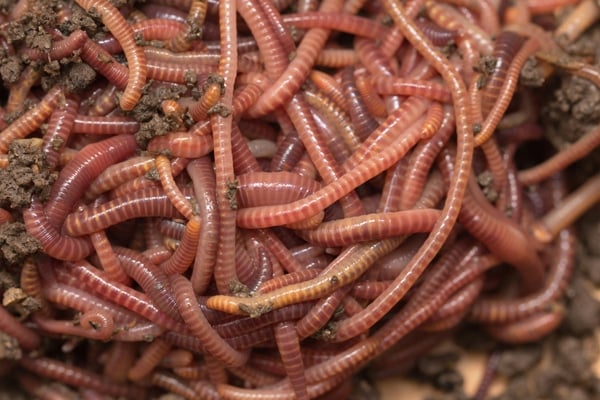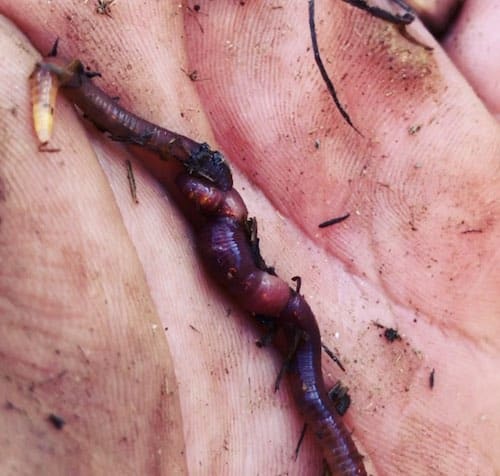Unlock the Secrets of Red Wigglers: Your Guide to Composting Success
The integration of red wigglers right into composting techniques offers a considerable chance for enhancing dirt health and wellness and promoting sustainability. Recognizing their demands and habits is critical for optimizing their possibility, from setting up an appropriate worm container to feeding them the best materials.

What Are Red Wigglers?
(Red Wiggler Express)Red wigglers, clinically recognized as Eisenia fetida, are a varieties of earthworm largely used in composting due to their impressive capability to decompose raw material successfully. These worms are identified by their reddish-brown coloration and a fractional body, normally measuring in between 3 to 4 inches in length. Unlike various other earthworm species, red wigglers grow in rich, natural atmospheres, making them ideal for vermicomposting systems.
Indigenous to North America, they are usually found in decomposing leaves and garden compost piles, where they play a critical function in nutrient recycling. Their adjustment to living in a damp, aerobic atmosphere allows them to eat large amounts of organic waste, simplifying right into nutrient-rich castings that improve dirt health.
Red wigglers replicate swiftly, with a solitary worm qualified of generating several cocoons each week, each including several hatchlings. Comprehending the biology and actions of red wigglers is essential for maximizing their potential in composting applications.
Benefits of Using Red Wigglers
Utilizing the power of red wigglers in composting provides various benefits that enhance soil health and promote sustainable waste management. These remarkable organisms efficiently damage down natural matter, changing cooking area scraps and backyard waste right into nutrient-rich vermicompost. This completed product is extremely useful for plant growth, as it enhances soil structure, increases dampness retention, and boosts vitamins and mineral accessibility.

(Lake Hickory Bait)Additionally, the presence of red wigglers in your composting system can increase the composting process, creating premium compost in a portion of the time contrasted to standard methods. The spreadings created by these worms are also including helpful bacteria that further improve the soil ecosystem.
Establishing Up Your Worm Bin
Developing an effective worm container is a simple procedure that can substantially enhance your composting initiatives. The This Site primary step is selecting an appropriate container. Worm containers can be made from plastic storage containers, wooden boxes, or readily offered worm containers. Ensure the container has adequate drain and air flow holes to preserve optimum moisture degrees and airflow.
Next, prepare the bed linen product, which offers as the worms' environment. A mix of shredded newspaper, cardboard, and coconut coir works well, giving a comfortable environment for the worms.

Feeding Your Red Wigglers
To guarantee the health and efficiency of your red wigglers, it is important to offer them with a well balanced diet regimen that fulfills their dietary needs. Red wigglers prosper on a diverse selection of organic products, which not just provide essential nutrients but additionally promote reliable composting.
Beginning by integrating cooking area scraps such as veggie peels, fruit cores, and coffee premises. Stay clear of citrus fruits, onions, and garlic, as these can be destructive to worm wellness. Furthermore, present shredded paper, cardboard, and completely dry fallen leaves to develop a well-aerated atmosphere.
Feeding frequency need to be kept track of; usually, worms can take in half their body weight in food weekly. It is essential to stay clear of overfeeding, as excess food can lead to undesirable smells and draw in parasites. An excellent practice is to include food in percentages, permitting worms to refine it before presenting more.
Preserving dampness degrees is also crucial; the bed linens should be moist yet not soggy. Be sure to consistently check the temperature and pH levels of the container to ensure an optimal environment for your red wigglers, eventually improving their composting performance.
Harvesting and Making Use Of Garden Compost
An effective composting process with red wigglers culminates in the abundant, dark garden compost referred to as vermicompost, which can dramatically boost soil health and wellness and plant growth. Harvesting this nutrient-dense product commonly takes place every 3 to 6 months, depending upon the size of your system and the quantity of natural matter being processed.
To collect, carefully separate the garden compost from the worms and any kind of undecomposed products. One efficient method entails relocating the contents of the container away and adding fresh bed linens and food to the vacant space, encouraging the worms to migrate. After a couple of days, the garden compost can be collected from the opposite side.
It is crucial to utilize vermicompost properly to optimize its advantages. By including vermicompost right into your horticulture regimen, you not only reuse organic waste but likewise develop a flourishing ecosystem that supports lasting horticulture techniques.
Final Thought
In summary, red wigglers serve as exceptional allies in composting initiatives, transforming natural waste right into nutrient-rich vermicompost (Red Wiggler Express). Their distinct organic characteristics and effective waste processing abilities add considerably to sustainable gardening techniques. By recognizing the ideal problems for their habitat, feeding needs, and garden compost harvesting techniques, gardeners can improve dirt health and advertise plant vitality. Welcoming vermicomposting not only decreases garbage dump waste but also cultivates a much more eco liable approach to gardening and source monitoring.